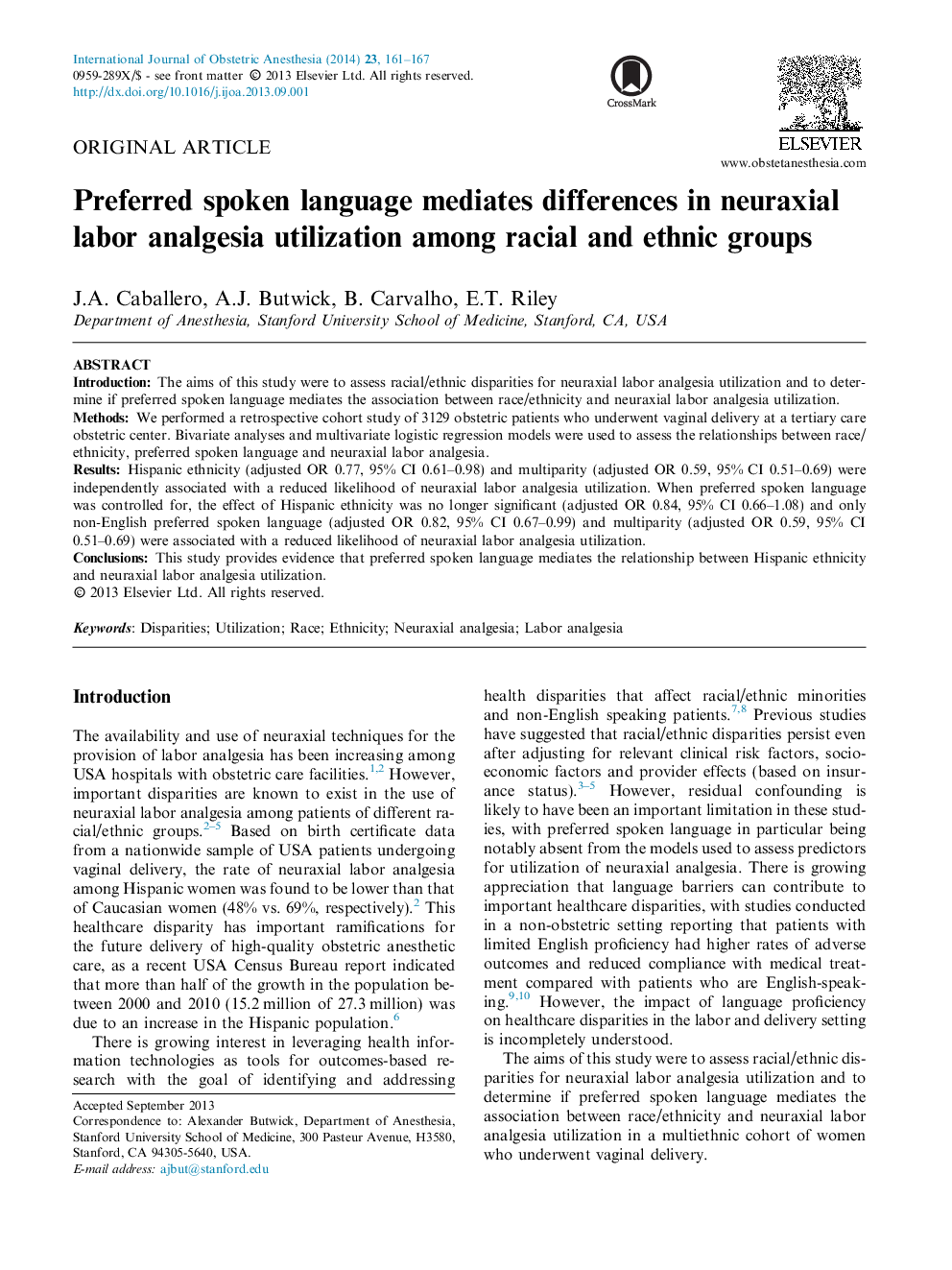| Article ID | Journal | Published Year | Pages | File Type |
|---|---|---|---|---|
| 2757502 | International Journal of Obstetric Anesthesia | 2014 | 7 Pages |
IntroductionThe aims of this study were to assess racial/ethnic disparities for neuraxial labor analgesia utilization and to determine if preferred spoken language mediates the association between race/ethnicity and neuraxial labor analgesia utilization.MethodsWe performed a retrospective cohort study of 3129 obstetric patients who underwent vaginal delivery at a tertiary care obstetric center. Bivariate analyses and multivariate logistic regression models were used to assess the relationships between race/ethnicity, preferred spoken language and neuraxial labor analgesia.ResultsHispanic ethnicity (adjusted OR 0.77, 95% CI 0.61–0.98) and multiparity (adjusted OR 0.59, 95% CI 0.51–0.69) were independently associated with a reduced likelihood of neuraxial labor analgesia utilization. When preferred spoken language was controlled for, the effect of Hispanic ethnicity was no longer significant (adjusted OR 0.84, 95% CI 0.66–1.08) and only non-English preferred spoken language (adjusted OR 0.82, 95% CI 0.67–0.99) and multiparity (adjusted OR 0.59, 95% CI 0.51–0.69) were associated with a reduced likelihood of neuraxial labor analgesia utilization.ConclusionsThis study provides evidence that preferred spoken language mediates the relationship between Hispanic ethnicity and neuraxial labor analgesia utilization.
